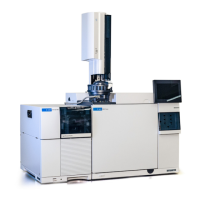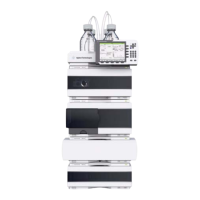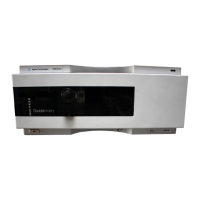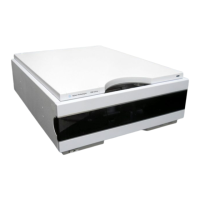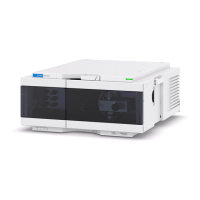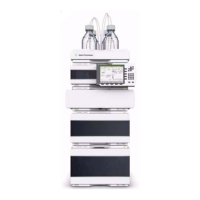5 Operating in CI Mode
To Use Other Reagent Gases
5977C GC/MSD Operating Manual 129
Isobutane CI
Isobutane (C
4
H
10
) is commonly used for CI when less fragmentation is desired
in the CI spectrum. This is because the proton affinity of isobutane is higher than
that of methane; hence, less energy is transferred in the ionization reaction.
Addition and proton transfer are the ionization mechanisms most often associated
with isobutane. The sample itself influences which mechanism dominates.
Ammonia CI
Ammonia (NH
3
) is commonly used for CI when less fragmentation is desired in
the CI spectrum. This is because the proton affinity of ammonia is higher than
that of methane; hence, less energy is transferred in the ionization reaction.
Because many compounds of interest have insufficient proton affinities,
ammonia CI spectra often result from the addition of NH
4
+
and then, in some
cases, from the subsequent loss of water. Ammonia reagent ion spectra have
principal ions at m/z 18, 35, and 52, corresponding to NH
4
+
, NH
4
(NH
3
)
+
, and
NH
4
(NH
3
)
2
+
.
To adjust your MSD for isobutane or ammonia CI, use the following procedure:
Procedure
1 Perform a standard PCI autotune with methane and PFDTD. (See “To
Perform a PCI Autotune (Methane Only)” on page 131.)
2 In the Tune and Vacuum Control view from the Tune menu, click Tune
Wizard, and when prompted, select Isobutane or Ammonia. This will change
the menus to use the selected gas and select appropriate default tune
parameters.
3 When prompted, select Gas B. (the port where Isobutane or Ammonia is
plumbed). Continue to the prompts from the Tune Wizard and set the gas
flow to 20%.
If you use an existing tune file, be sure to save it with a new name if you do
not want to overwrite the existing values. Accept the default temperature
and other settings.

